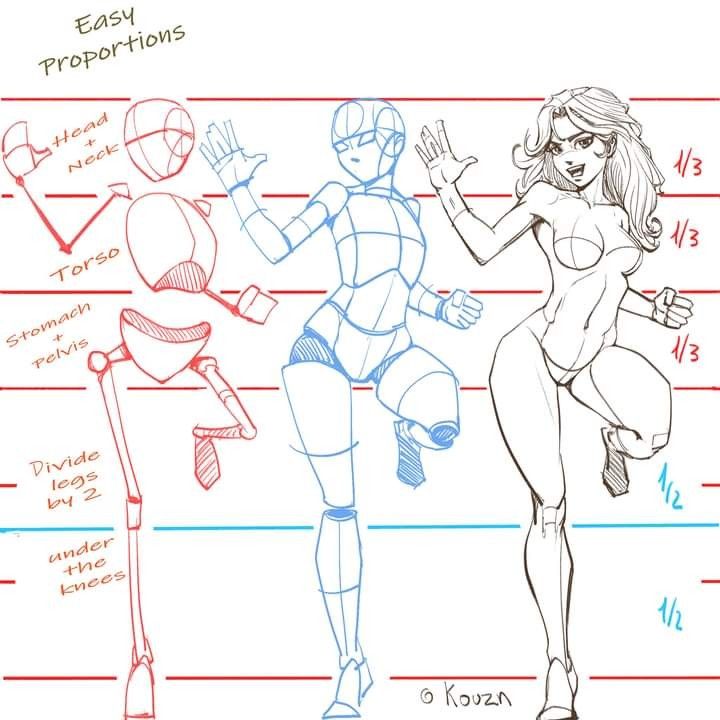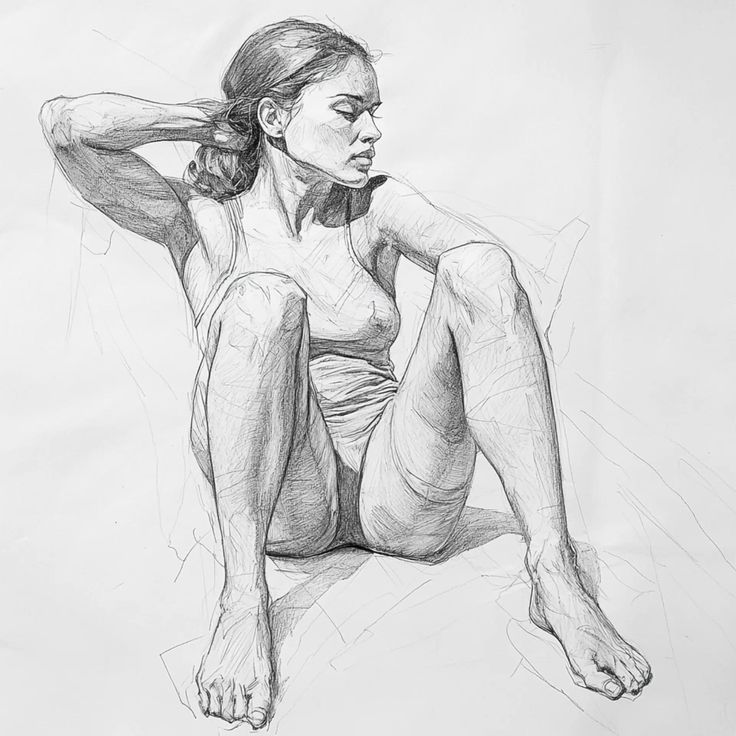

Human figure drawing is a fundamental skill that many artists seek to master. It encompasses understanding anatomy, movement, and proportion to create lifelike representations of the human form. By honing this skill, artists can elevate their work and convey emotion, action, or narrative through their figures.
Effective human figure drawing combines various techniques and materials tailored to the artist’s style. Artists can choose from graphite, charcoal, or digital tools, each offering unique benefits. Practicing with anatomical references can enhance accuracy and understanding of body dynamics, allowing for more expressive and compelling artwork.
Achieving proficiency in human figure drawing requires dedication and practice. Engaging in targeted exercises helps artists build their skills and confidence, ultimately leading to a deeper appreciation for the human body as a subject.
Key Takeaways
- Understanding anatomy enhances figure drawing skills.
- Various materials can be utilized based on the artist’s preference.
- Regular practice is essential for improvement in human figure drawing.
The Essentials of Human Figure Drawing


Understanding the human form requires a solid grasp of anatomy and proportions. These core elements enable an artist to create accurate and expressive figure drawings.
Understanding Human Anatomy
A foundational knowledge of human anatomy is crucial for figure drawing. The major skeletal structures, muscle groups, and overall body systems define how the figure moves and exists in space.
Key components include:
- Skeletal Structure: Familiarity with bones helps visualize the body’s internal framework.
- Muscle Groups: Understanding how muscles function and connect gives insight into movement and form.
- Body Planes: Recognizing the planes (frontal, sagittal, transverse) aids in creating accurate perspective.
Studying anatomy through life drawing, anatomy textbooks, or 3D models enriches an artist’s skill set.
Mastering Proportions


Accurate proportions create realism in figure drawings. Understanding proportion involves knowing the relative size and scale of different body parts in relation to one another.
Standard proportions include:
- Head as a Unit: Traditionally, the human body is about 7-8 heads tall.
- Limb Lengths: Arms and legs follow specific length ratios that vary based on posture and movement.
- Width Measurements: The width of the shoulders should align proportionally with the pelvis to maintain balance.
Practicing against established guidelines helps artists develop a keen eye for proportion and creates compelling compositions.
Materials and Mediums


Selecting the appropriate materials and mediums is crucial for effective human figure drawing. The choice of drawing tools and mediums directly influences the artist’s ability to achieve desired results in texture, detail, and expression.
Choosing the Right Drawing Tools
When drawing the human figure, various tools can enhance the artist’s ability to capture form and movement. Pencils are a fundamental choice, with ranges from H (hard) to B (soft) providing different effects. A soft pencil like 2B allows for deeper shading and smoother lines, while harder pencils help in achieving fine details.
Charcoal is another popular medium, valued for its rich black tones and versatility. Compressed charcoal creates bold lines, while vine charcoal is softer and better for light sketching. The application techniques, such as blending with fingers or a blending stump, can produce varied textures.
Exploring Different Mediums
Aside from pencils and charcoal, artists can choose from various mediums to express different styles. Graphite can yield smooth, precise lines and is often combined with other materials for depth. Charcoal and graphite may be used in tandem to create dynamic contrasts on the page.
Other mediums to consider include ink, pastels, and digital tools. Pastels provide vibrant colors and can be blended for softer transitions. Digital mediums enable artists to explore limitless color options and editing capabilities. Each medium offers unique textures and effects, allowing for experimentation and personal expression.
Foundational Drawing Techniques


Fundamental drawing techniques are essential for anyone looking to improve their skills in human figure drawing. Mastering these techniques can greatly enhance the artist’s ability to capture form, movement, and depth.
Gesture Drawing Basics
Gesture drawing focuses on capturing the essence and movement of the human figure. It emphasizes quick sketches that capture the basic shapes and flow of the body in a short amount of time.
Key aspects include:
Basic Shapes: Artists begin by breaking down the figure into simple shapes such as circles, rectangles, and lines. This helps establish proportions.
Line Quality: Varying line weights can convey different aspects of movement and energy. Thicker lines may depict more weight, while thinner lines suggest lightness.
Practicing gesture drawing regularly develops an artist’s ability to quickly and accurately represent dynamic poses, ensuring a more lifelike outcome in figure work.
Shading and Rendering
Shading and rendering techniques add depth and volume to figure drawings. They transform flat sketches into three-dimensional representations through effective use of light and shadow.
Key techniques include:
Hatching and Cross-Hatching: These involve creating lines in varying densities to build up areas of shadow.
Blending: Softening edges and gradients using materials like tortillons or fingers can create smooth transitions between light and dark.
Highlighting: Identifying the light source allows artists to leave areas blank or apply lighter shades to simulate highlights, enhancing realism.
Combining these shading techniques helps to create more expressive and visually engaging figures, making the drawing more captivating.
Drawing Dynamic Human Figures


Dynamic human figures convey movement and life. To achieve this, artists focus on capturing gesture and incorporating techniques like foreshortening.
Capturing Dynamic Poses
Gesture drawing is essential for representing dynamic poses. It emphasizes the flow and movement of the human figure rather than intricate details. This practice involves quick sketches that prioritize action over form.
Artists often use short time frames, typically from 30 seconds to 5 minutes, for each gesture drawing. This method encourages spontaneity. Focus on the line of action and the primary shapes in the figure.
Tips for capturing dynamic poses:
- Use fluid lines that indicate movement.
- Simplify the shapes while maintaining proportions.
- Practice regularly to improve observational skills.
Incorporating Foreshortening


Foreshortening creates the illusion of depth and adds realism to dynamic drawings. It involves drawing parts of the figure closer to the viewer larger than those further away. This technique enhances the sense of perspective and movement.
To effectively apply foreshortening:
- Study reference images from various angles.
- Break down the figure into simple shapes to visualize depth.
- Use guidelines to maintain proportion and orientation.
By understanding how limbs and torsos recede in space, artists can create more dynamic and engaging representations. Foreshortening contributes significantly to the overall impression of motion in gesture drawings.
Practical Exercises and Applications


Engaging in practical exercises enhances skills in human figure drawing. Two effective methods include participating in life drawing classes and conducting quick sketches. Each approach contributes to an artist’s ability to capture the human body accurately.
Life Drawing Class Insights
Life drawing classes provide structured environments for learning. In these sessions, artists sketch live models, which enhances their understanding of human anatomy and proportions. The presence of a model allows focus on gestures, poses, and movement.
Key elements of life drawing include:
- Observation: Encourages artists to study the model’s physical characteristics closely.
- Proportions: Understanding the relationship between different body parts aids in creating realistic figures.
- Techniques: Various mediums, such as charcoal or pencil, help to develop techniques for shading and contour.
Consistent attendance in these classes fosters improvement and a deeper appreciation for the human form.
Conducting Quick Sketches
Quick sketches, or gesture drawings, focus on capturing the essence and movement of the human figure in a limited time. Typically, these sketches range from 30 seconds to 5 minutes.
This practice emphasizes:
- Speed: Artists learn to draw quickly, honing their ability to depict action and form efficiently.
- Simplicity: Capturing the basic shapes of the body fosters an understanding of overall structure.
- Fluidity: Quick sketching encourages a loose, confident style, allowing for creative expression.
Anatomical Reference and Study


Understanding human anatomy is crucial for effective figure drawing. By utilizing reference images and exploring art history, artists can enhance their skills and create more accurate representations of the human form.
Collecting and Using Reference Images
Reference images serve as essential tools for figure drawing. They provide artists with a visual guide that aids in capturing proportions, poses, and anatomical details.
- Sources for Reference Images:
- Photos: Use high-resolution photographs from a variety of angles.
- Life Drawing Sessions: Attend live models for direct observation.
- Online Databases: Websites like Unsplash and Pexels offer free to use images.
When selecting images, focus on clarity and relevance to the pose or anatomy being studied. Artists should analyze these images to understand muscle structure and joint movement, which greatly aids in achieving realism in their work.
Studying Art History
Art history provides valuable insights into figure drawing techniques and styles. By examining the works of renowned artists, one can learn different approaches to human representation.
- Key Artists to Study:
- Michelangelo: Known for his incredible understanding of anatomy.
- Degas: His studies of movement capture the essence of human grace.
- Ingres: Exemplifies precision in form and line.
Exploring various styles and techniques not only inspires creativity but also informs the artist’s own methods. Artists should analyze how these figures were constructed in terms of proportions and poses to enhance their own figure drawing skills.
Building Skill through Practice


Developing skill in human figure drawing requires a consistent and focused approach. Structuring practice sessions and utilizing targeted tutorials can significantly enhance learning. The following subsections outline effective methods for building proficiency.
Creating a Structured Learning Path
A structured learning path helps ensure consistent progress. It can include several core components:
- Foundations: Start with basic shapes and forms. Understanding how to break down the body into simple geometries is essential.
- Proportions: Focus on the proportions of the body. Knowing the standard measurements, such as head height relative to the body, aids in accuracy.
- Stick Figures: Utilize stick figures to practice movement and gesture. They enable quick exploration of poses without getting bogged down in details.
- Incremental Goals: Set small, achievable goals, such as mastering one body part each week. This keeps motivation high and progress measurable.
Tracking advancements through a sketchbook can also enhance retention and showcase growth over time.
Drawing Tutorial Recommendations


Engaging with specific drawing tutorials can provide valuable insights into technique and style. Here are some recommended resources:
- YouTube Channels: Channels like Proko and Drawabox offer structured lessons on human anatomy and proportions.
- Online Courses: Websites like Skillshare and Udemy provide comprehensive courses that cover figure drawing fundamentals to advanced techniques.
- Books: “Figure Drawing: Design and Invention” by Michael Hampton is excellent for understanding anatomy and proportions. Other titles include “The Natural Way to Draw” by Kimon Nicolaides which emphasizes observational skills.
- Practice Exercises: Follow tutorials that include practice exercises, such as timed gesture drawing sessions. These can enhance speed and accuracy.
Incorporating these resources into a regular practice routine can help refine skills and reinforce learning effectively.
- 3.6Kshares
- Facebook0
- Pinterest3.6K
- Twitter0


